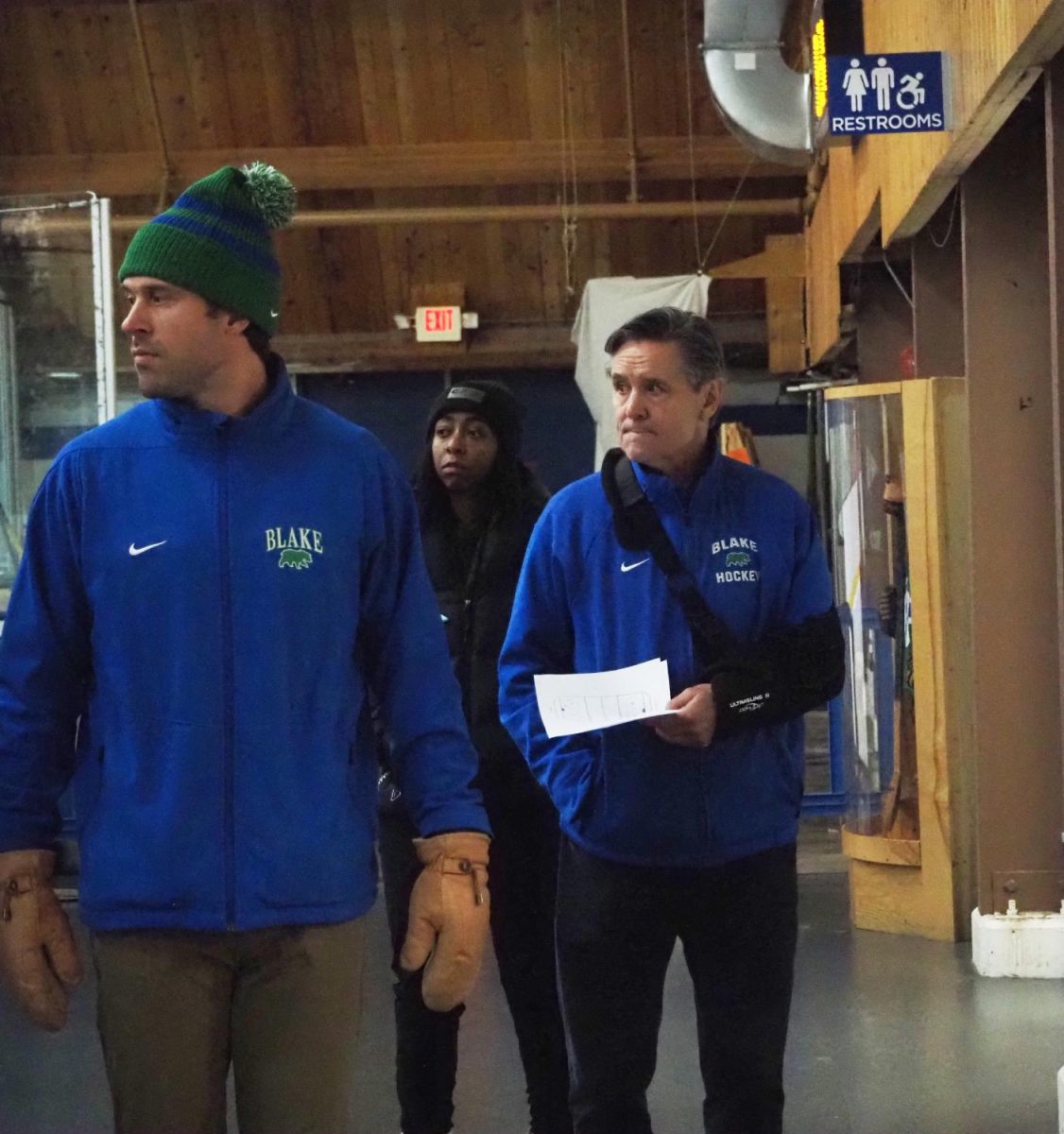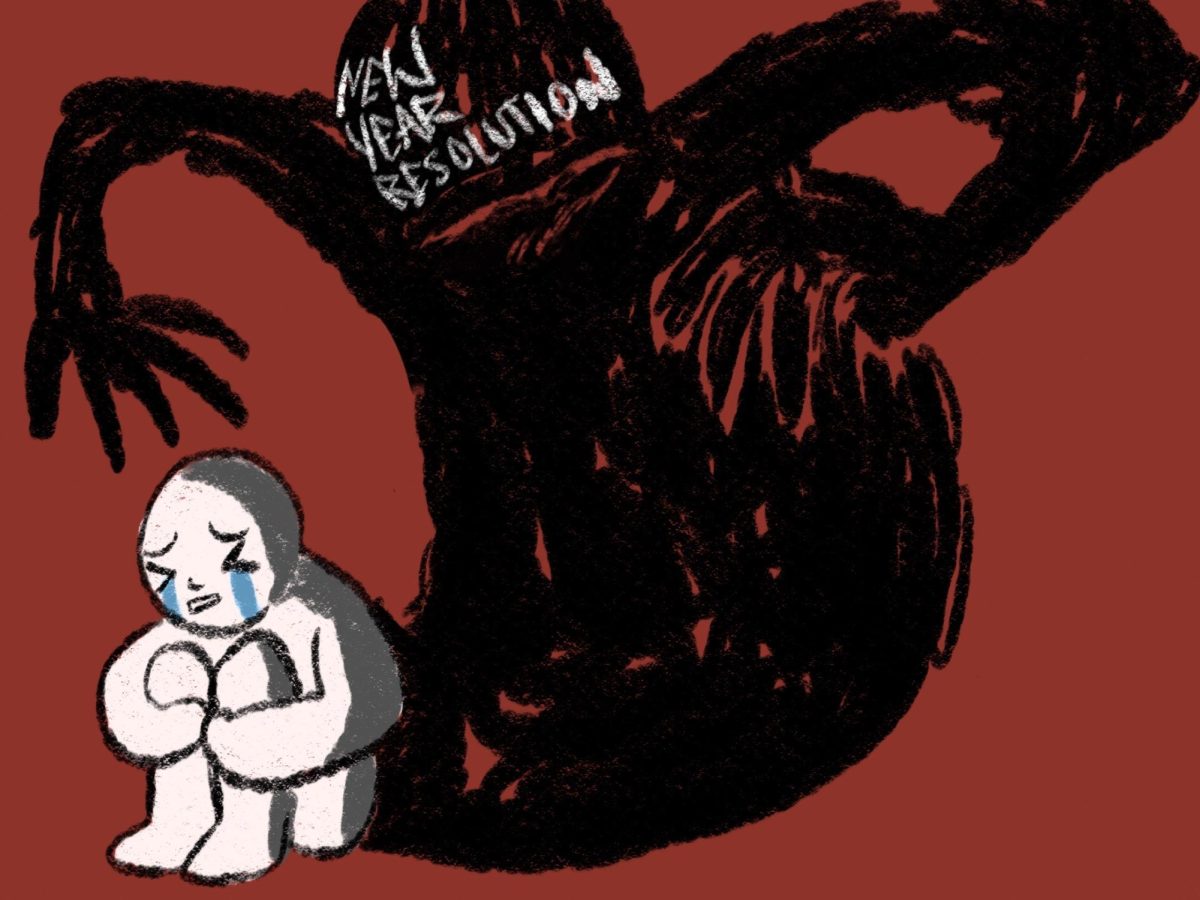The front bar at the Aamoth Stadium appears to be more a privilege than a right. If you’ve ever been to a home game, it’s clear the unspoken rule for leaning against that rail with your arms whipped out at full wingspan in a get-up of blue and green has less to do with who you are and more with how old you are.
It’s like how the ninth graders, sophomores, juniors and seniors rotate seats in the auditorium every year; as they get older, each grade moves closer and closer to the senior section, the site of rounds and rounds of unified choruses of “seniors, seniors,” while the other grade sections giggle and wonder if their grade will do the same in upcoming years.
It doesn’t end there. If ninth graders want a lounge, they are expected trek to the Cherne Forum: a creaky, unfurnished wooden platform great altitudes above the coveted and cozy junior and senior lounges. The lunchroom naturally divides into sections, often leaving the freshmen to their own corner entirely. By design, there are built-in rewards for moving up a grade level. But is it also, then, by design that younger students are in small ways expected to stand on the sidelines rather than participate in things to the same level as older students?
Morgan Phillips ‘19 voices a caution that exists for most youngsters, explaining she probably “wouldn’t go all out” for each and every day of Spirit Week. Chloe Countryman ‘19 notes “seniors are kind of intimidating and since [the front bar at football games is] their spot, I wouldn’t want to get in their space.”
Emily Johnsrud ‘17 says she would not have been as comfortable going up to that bar two years ago as she now is.
Oddly enough, at one point, all those roaring seniors were new to the school, observing the unofficially marked territories such as the bar at Aamoth and the Northrup Lounge out of the corners of their eyes. To some extent, this observation is a vehicle towards becoming. Anisa Hickey ‘16 says “it’s something that seniors should do to set an example for kids.” Dressing up and showing up is like a cherished heirloom, or a hand-me-down.
Some students naturally become more comfortable dressing up and standing at the bar as they get older. Grade level affects students’ experiences at other school events, such as football games and school dances (in which the “mosh pit” often sees more upperclassmen than underclassmen). The question begs whether school spirit is more unifying or exclusive.
Apparently, it’s always been this way: showing spirit can be both exciting and intimidating, depending on who you are. Students express school spirit because “It’s just tradition,” according to Hickey.
Interestingly, the pressure to participate in Spirit Week as a senior is as strong as the pressure to lay low as a ninth grader. Hickey explains: “the seniors come up with the ideas and everyone just follows it…and it’s almost kind of frowned upon if you don’t dress up.”
Some students enter high school ready to dive right in. Emmet Whitely ‘18 says his “comfort level is the same [as it was last year]” and he could definitely feel good about joining eleventh and twelfth graders at the bar. The same is true for Michael Mitchell ‘17, who recalls feeling comfortable as a ninth grader. Clearly, participation in school spirit isn’t universally daunting.
Hickey exemplifies a student who has spirit, but doesn’t wish to show it in the typical way one-hundred percent of the time. She is “proud to go to this school and [glad she goes] to this school because it’s a wonderful opportunity.” She continues, “I rep Blake all day every day, but I don’t have to show it by what I wear.”
Each person has different levels of fear and enthusiasm around showing spirit. A lot of what school spirit is, though, is being true to oneself in level of spirit shown. What matters more than how someone expresses themselves is how connected they actually feel. You can’t really know this, but you can give them little opportunities to feel more connected. Dare to break a boundary, or make a space at that bar for a ninth grader.











